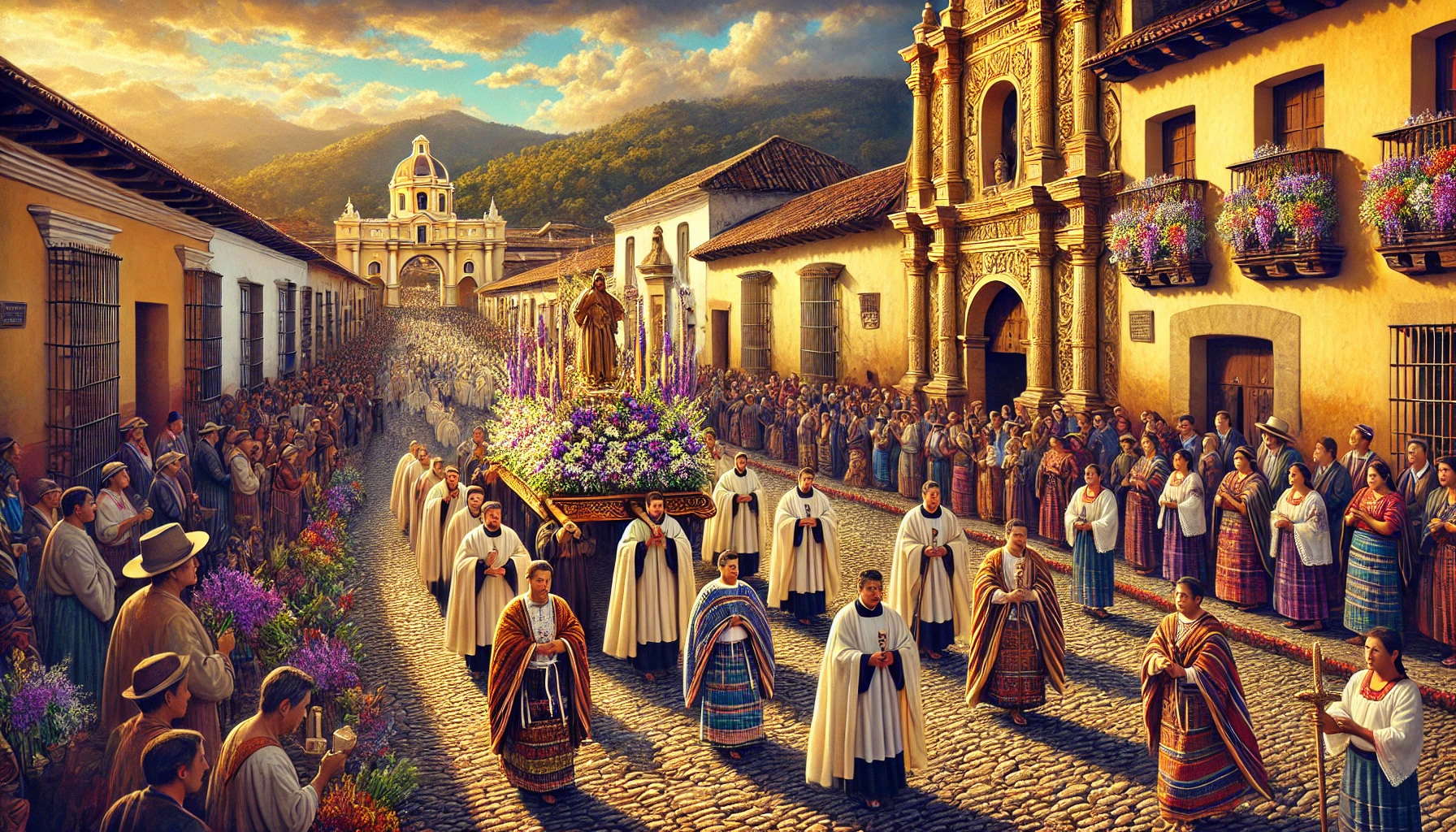
Antigua Guatemala, a city steeped in history and rich in cultural heritage, becomes a focal point of global attention during the Easter season. Among its many religious observances, Good Friday stands out as a day of profound spiritual significance, drawing thousands of visitors from around the world. The city’s cobblestone streets and colonial architecture provide a stunning backdrop to the elaborate processions that characterize this solemn occasion. Good Friday in Antigua is not just a religious event; it is a cultural spectacle that encapsulates centuries of tradition, devotion, and artistic expression.
The Historical Significance of Good Friday in Antigua Guatemala
Antigua Guatemala, once the capital of the Spanish Kingdom of Guatemala, has long been a center of religious and cultural life. The city’s Good Friday observances date back to the 16th century, when Spanish missionaries introduced Christian rituals to the region. Over time, these rituals evolved into the grand processions and ceremonies that define the day today.
Good Friday, known locally as “Viernes Santo,” commemorates the crucifixion of Jesus Christ, a central event in Christian theology. In Antigua, the day is marked by processions that begin in the early hours of the morning and continue until late at night. These processions are not merely reenactments; they are acts of devotion, where participants and spectators alike engage in a shared experience of faith and reflection.
The historical significance of Good Friday in Antigua is also tied to the city’s architectural heritage. The processions pass through streets lined with centuries-old churches and convents, many of which play active roles in the day’s events. The blend of religious observance with Antigua’s historical setting creates an atmosphere that is both reverent and awe-inspiring, making Good Friday a truly unique experience.
The Intricacies of the Good Friday Processions
The processions of Good Friday in Antigua are renowned for their scale and intricacy. Each procession is organized by a different brotherhood, or “cofradía,” which is responsible for the planning and execution of the event. The processions feature large wooden floats, known as “andas,” which carry statues depicting scenes from the Passion of Christ. These andas are carried on the shoulders of devoted men and women, known as “cucuruchos” and “damas,” who often wear traditional purple robes as a sign of penance.
One of the most striking aspects of the processions is the alfombras, or carpets, that line the streets. These intricate carpets are made from colored sawdust, flowers, and other organic materials, and they depict religious symbols, scenes, and even modern interpretations of Christian themes. The creation of these alfombras is a communal effort, with families and groups of friends spending hours meticulously arranging the materials. As the procession passes, the carpets are trampled underfoot, a poignant reminder of the impermanence of life.
The processions themselves are slow and solemn, accompanied by the mournful sounds of marching bands playing funeral dirges. The largest and most significant procession is that of the Jesús Nazareno de la Merced, which draws thousands of participants and spectators. The procession winds its way through the city, stopping at key points for prayers and reflections, before returning to its starting point late in the evening. This act of carrying the andas and participating in the procession is seen as a form of penance and devotion, making it a deeply personal and spiritual experience for those involved.
Cultural and Artistic Expressions During Good Friday
While Good Friday in Antigua is primarily a religious event, it is also a showcase of the city’s rich cultural and artistic heritage. The creation of the alfombras is one of the most visually striking elements of the day, combining artistic expression with religious devotion. These carpets, often spanning entire streets, are masterpieces of design and color, featuring intricate patterns and images that reflect both traditional and contemporary themes.
The artistry of Good Friday extends beyond the alfombras. The andas themselves are works of art, often adorned with gold leaf, intricate carvings, and elaborate floral arrangements. Each float is a collaborative effort, with artisans, florists, and members of the cofradía working together to create a tableau that is both beautiful and meaningful. The statues that grace the andas are also significant, many of them centuries old and considered sacred by the local community.
In addition to the visual arts, Good Friday in Antigua is also a time for music and performance. The processions are accompanied by bands playing traditional funeral marches, which add to the somber and reflective atmosphere. The music, often composed specifically for the occasion, is a key part of the experience, underscoring the emotional weight of the day.
Moreover, Good Friday is a time for the preservation and transmission of cultural traditions. Many of the rituals and practices associated with the day have been passed down through generations, with families and communities taking pride in their roles. Whether it is the making of alfombras, the preparation of the andas, or the participation in the processions, each aspect of Good Friday in Antigua is imbued with a sense of continuity and cultural identity.
Experiencing Good Friday as a Visitor
For those fortunate enough to experience Good Friday in Antigua Guatemala, it is an event that leaves a lasting impression. The city, with its colonial charm and spiritual ambiance, becomes a living stage where history, religion, and culture intersect. Visitors are welcomed into this world, not merely as spectators but as participants in a communal act of remembrance and faith.
Planning a visit to Antigua for Good Friday requires some preparation, as the city becomes a hub of activity during the Easter week. Accommodations fill up quickly, and the streets are crowded with locals and tourists alike. However, the experience is well worth the effort. From the early morning vigils to the late-night processions, visitors can immerse themselves in the traditions and customs that define this sacred day.
One of the best ways to experience Good Friday in Antigua is to explore the city on foot. The processions wind through many of the city’s most iconic landmarks, providing a unique opportunity to see these sites in a different light. The Cathedral of San José, the Church of La Merced, and the ruins of the Convent of Capuchins are just a few of the places where the processions pause for prayers and reflections.
In addition to the processions, visitors can also engage with the local community by participating in the creation of alfombras or attending the various religious services held throughout the day. Many of the churches in Antigua open their doors to the public, offering a chance to witness the preparations for the processions and to learn more about the significance of the day.
Good Friday in Antigua is more than just a religious observance; it is a cultural and sensory experience that engages all who take part. Whether it is the sight of the andas making their way through the streets, the sound of the funeral marches, or the scent of incense and flowers, the day is filled with moments that resonate on both a personal and collective level.
In conclusion, Good Friday in Antigua Guatemala is a profound and multifaceted event that offers a glimpse into the heart of the city’s cultural and religious identity. It is a day where history, art, and faith converge, creating an experience that is both deeply moving and unforgettable. For visitors and locals alike, it is a time to reflect, to participate, and to witness the enduring power of tradition in one of the world’s most beautiful and historic cities.








